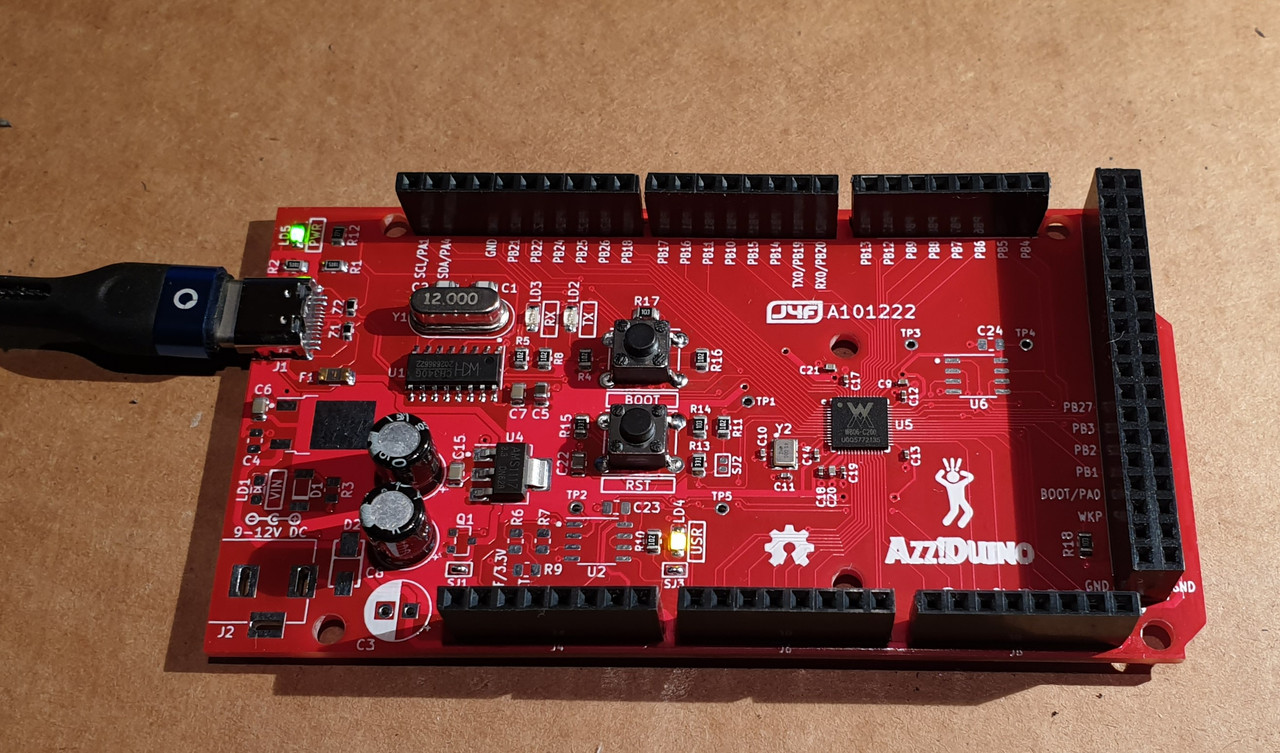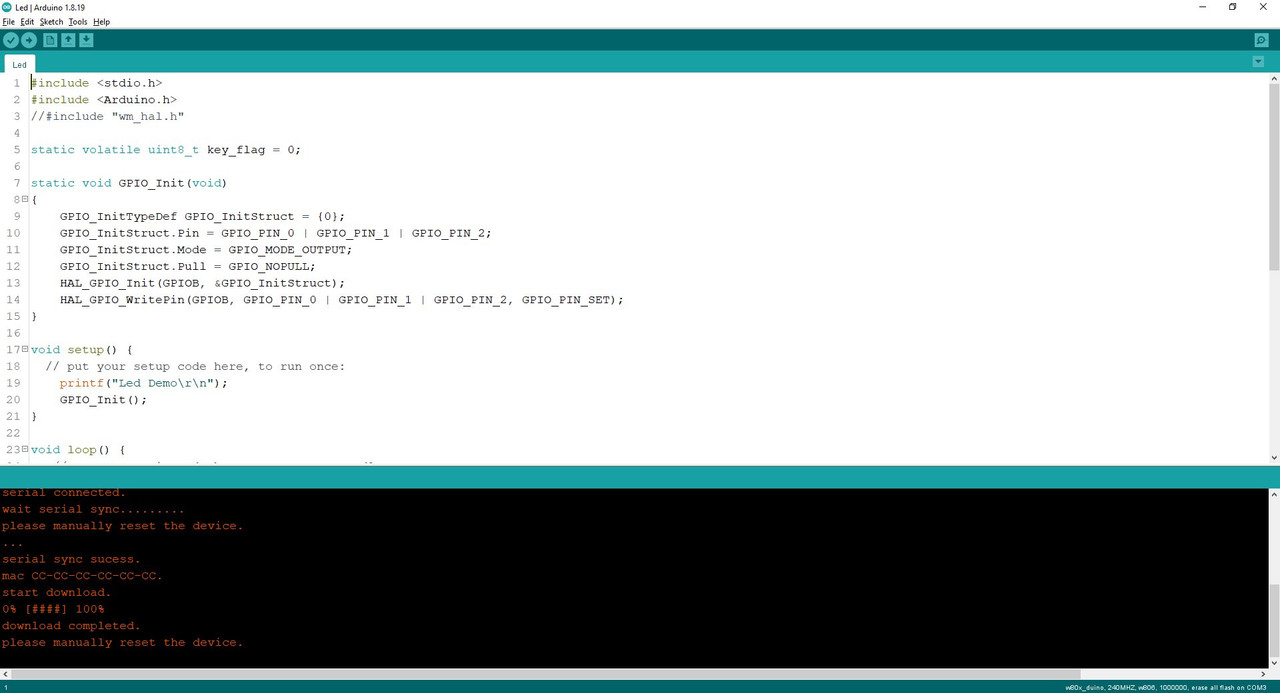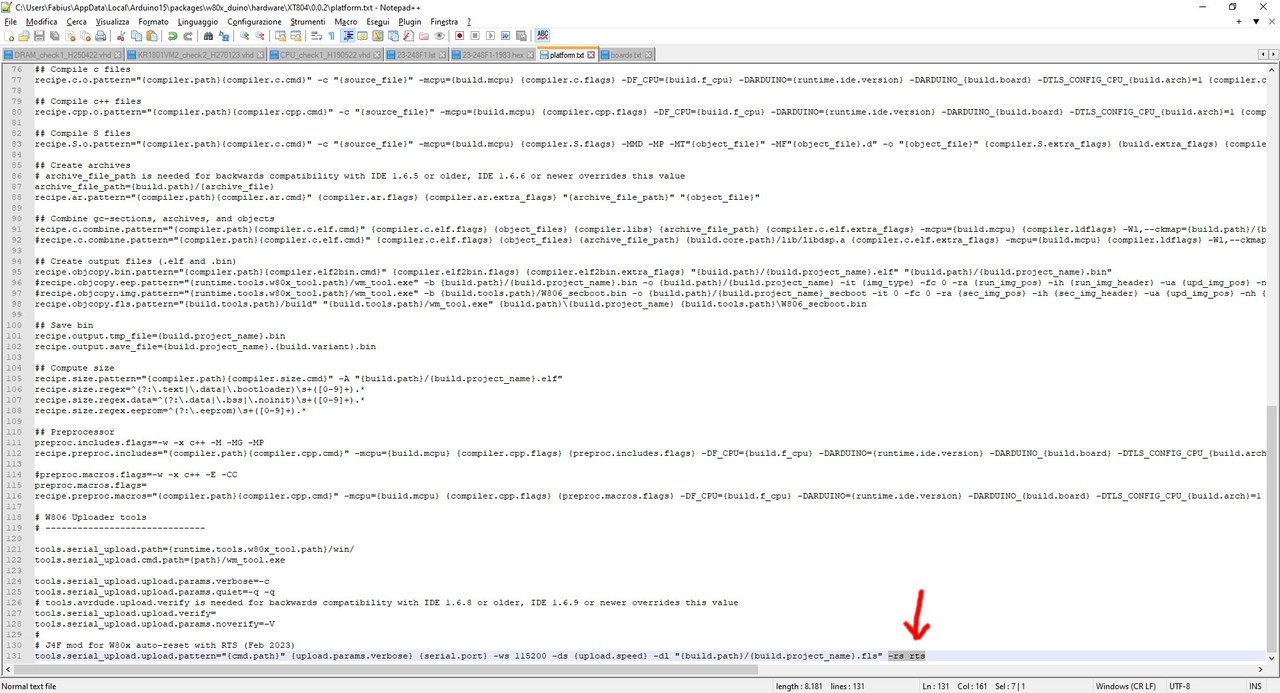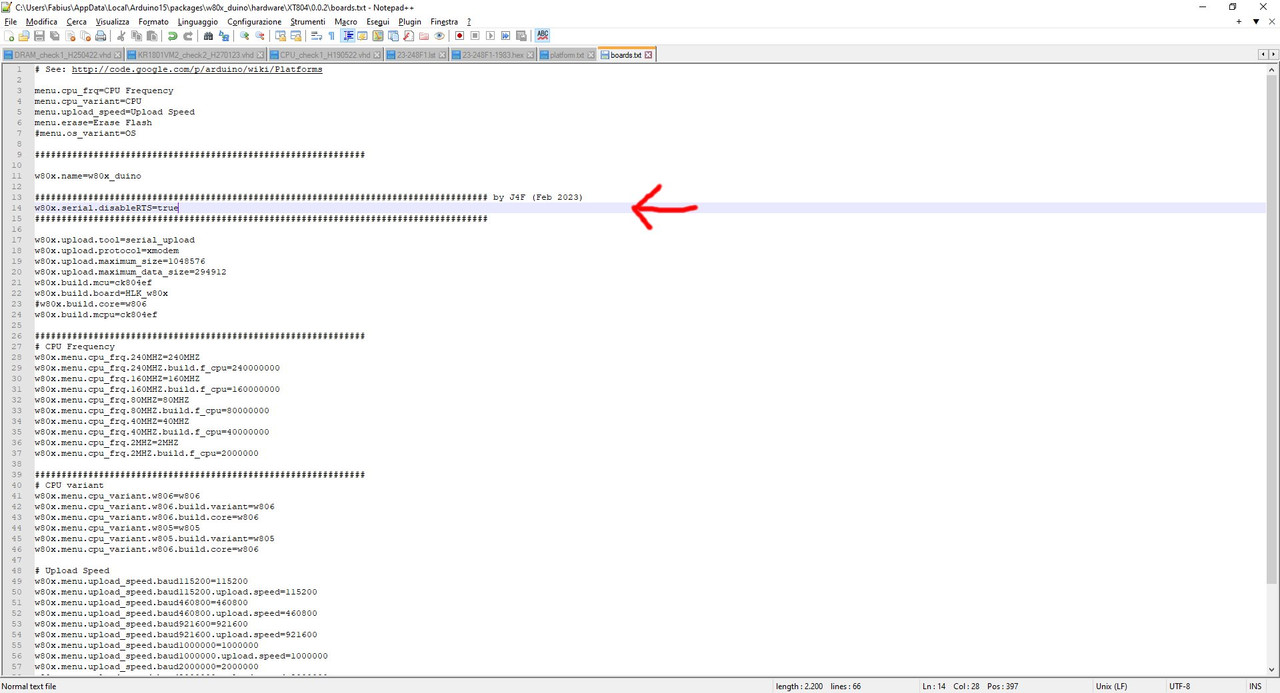
The PCB allows two options: PSRAM and external 9-12V supply.
I've just soldered a first board (no option installed) and it seems work as expected:


I'll publish all the details when ready, just in case...



Code: Select all
tools.serial_upload.upload.pattern="{cmd.path}" {upload.params.verbose} {serial.port} -ws 115200 -ds {upload.speed} -dl "{build.path}/{build.project_name}.fls"

I ran the same code on a STM32F103.I am going to manually calibrate a STM32F103 chip to see how that works.
my 5-min attempt at thisyou should be able to write a piece of code to find the optimal HSITRIM value
Code: Select all
//tune LSI frequency
//Ftgt: the target frequency used to tune LSI
//return: the calculated F_LSI
uint32_t LSItune(uint32_t Ftgt) {
uint8_t cnt=0; //tycle counter
uint32_t flsi_now=F_LSI, flsi_last; //initialize flsi
uint32_t ftgt=Ftgt;
uint32_t tmp;
do {
#if 1 //for debugging
//for debug only
//display the frequency
tmp = flsi_now; //item to be displayed
tmp = tmp % 10000; //display the last four digits
//tmp = (tmp / 10000) % 10000; //display the first four digits
lRAM[3]=tmp % 10; tmp /=10;
lRAM[2]=tmp % 10; tmp /=10;
lRAM[1]=tmp % 10; tmp /=10;
lRAM[0]=tmp % 10; tmp /=10;
//end display
#endif
flsi_last=flsi_now; //update flsi
rtcInit(RCC_BDCR_RTCSEL_LSI, flsi_last); //initialize the rtc
ftgt=rtcTicks(4)/4; //average ftgt over a period of time
flsi_now=Ftgt * flsi_last / ftgt; //update the new flsi
if (flsi_now==flsi_last) break; //exit if two consecutive measurements are the same
} while (cnt++<16); //exit for overtime
return flsi_now;
}